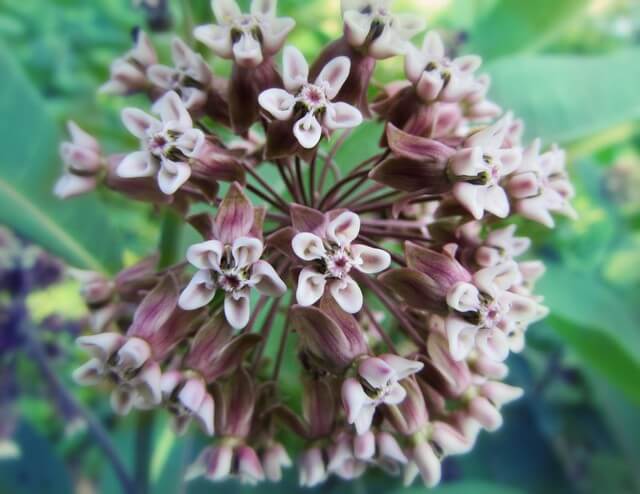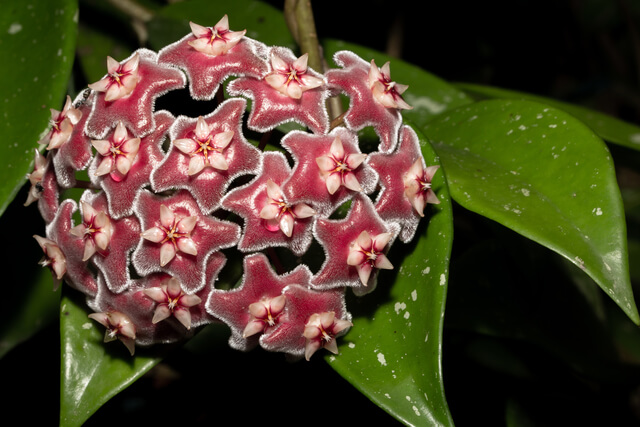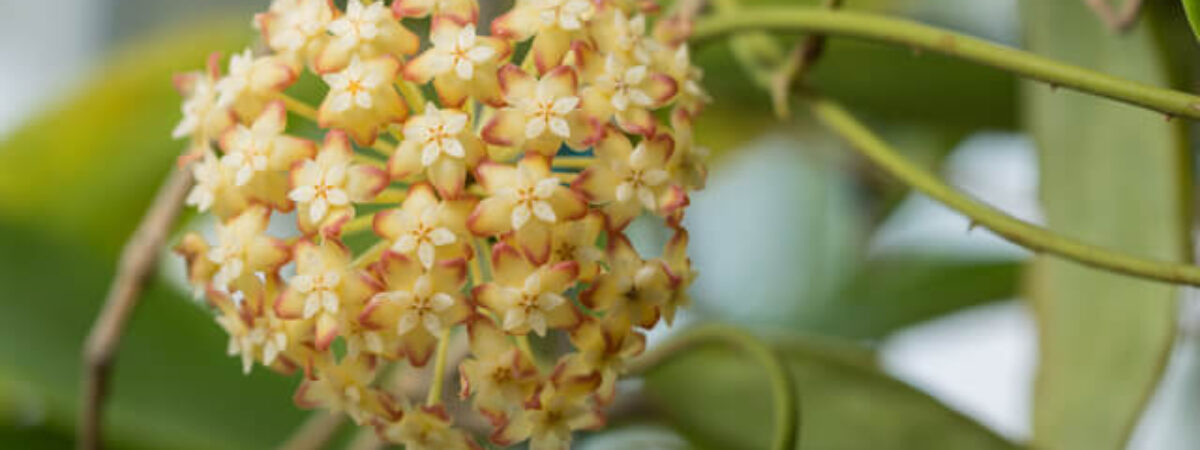Hoya is a flowering plant and is scientifically called Hoya carnosa. This plant belongs to the Hoya genus and to the family of Asclepiadaceae which is also known as the milkweed family.
The other common names of Hoya plants are Hoya, wax plant, wax flower, Indian rope plant, porcelain flower, honey plant. These plants are tropical succulents and native to Tropical Asia and Australia.
However, according to the new taxonomy, these plants are being placed under the family of Apocynaceae (dogbane).
The plant is named after 18th-century botanist Thomas Hoy and introduced by Scottish botanist Robert Brown.
It is now considered a fragrant, low-maintenance tropical flower by gardeners. They grow slowly to moderately and are planted in the spring or early summer.
Approximately two hundred species are known to exist in the genus, though this number could be understated because new species are discovered and reported on a constant basis.
The majority of these plants are epiphytes, meaning their roots grow in tree fissures rather than in the soil.
The overwhelming amount of hoyas available for indoor cultivation has creeping thyme or trailing growth habits. Click To TweetThe overwhelming amount of hoyas available for indoor cultivation has creeping thyme or trailing growth habits.
The several Hoya species accessible as houseplants have evergreen leaves and a wide diversity of leaf color, size, shape, and texture.Some have gleaming green foliage, while others have exquisite variegation and creased leaves.
These plants have dense and succulent leaves, which allows them to trap moisture for extended periods of time. Some species, however, have thinner foliage, making them less drought-resistant.

The long, naked tendrils of these plants, commonly nicknamed “whips,” often perplex new hoya plant growers.Hoya blooms are fragrant and spectacular, with a wide variety of colors according to the variety or cultivar.
These whips are produced by vining hoya species and are meant to search out trees for assistance so that they can climb higher into the treetops. These open tendrils will develop into aerial roots and leaves in the future.
Each bloom is star-shaped and has different centers. Flower clusters are normally spherical, modest to big in size, and feature distinct blooms which are star-shaped and have distinct centers.
Varieties
H. Kerrii Variegata ‘Sweetheart Plant’:Leaves are heart-shaped with white borders, and the flowers are yellow and orange.
H. Onychoides: Purple blooms with a star form that is amplified
H. Archboldiana: Beige cup-shaped blooms with a maroon fringe
H. Compacta ‘Indian Rope’: Even though the plant isn’t blooming, the light pink blossoms and curling leaves are attractive.
H. Cumingiata: Flowers are yellow with a red fringe and are aromatic.
Growing and Caring Guide
Thick stems with oily leaves are produced by the plants, which remain permanent. A hoya plant can be trained as a vine or allowed to hang over the container’s side.
Expect the plant to grow to an entire length or height of 2-4 feet in any case.Put your hoya plant in a hanging basket so you can view it from the comfort of your balcony or terrace.
Hoya plants will cling to a little trellis in your tropical container garden, providing a vertical emphasis. Along with any pond, fountain, or other water elements in your landscaping, a hoya plant would thrive in humid conditions. Click To TweetHoya plants will cling to a little trellis in your tropical container garden, providing a vertical emphasis. Along with any pond, fountain, or other water elements in your landscaping, a hoya plant would thrive in humid conditions.
Soil
The majority of hoya species grown indoors are epiphytes. That is, their roots are not accustomed to growing in rich soil, preferring instead to develop in the shallow cavities of trees.
To convert that into indoor requirements, these succulents require great drainage and thrive in thick potting mixes that provide ample airflow to their roots.

Native conditions vary by species, but hoyas generally prefer a planting medium with a pH of 6.1 to 7.3, ranging from mildly acidic to slightly alkaline.
A decent basic soil recipe for hoyas comprises equal proportions potting soil, pumice or perlite, and orchid bark or coconut husks if you want to produce your own potting mix.
Light
Hoyas do best in bright, indirect sunshine. Hoyas may also grow in mild indirect light, however, most of them will not flower. Colorful hoyas may also lose their variegation if light levels have dropped.
Water
The plants should be watered once a week and let dry between watering. The rate at which your plant dries up is determined by its potting soil, pot, and the climate in your home.
Your plant will dry out faster if it is in a terra cotta pot rather than a plastic one. If you keep your hoya in bright, more direct light, it will also require more frequent watering.
And if your variety’ leaves are narrower and less succulent, like H. retusa or H. multiflora, it has a lower capacity for moisture conservation and may need to be watered more regularly.
During the winter, reduce the number of times you water your plants. Always use distilled water, or filtered water for watering.
Temperature and Humidity
The plants flourish in warm, moist, humid climates as a tropical plant. They thrive in the 70°F temps that we find in our warmed and air-conditioned houses.
Leaves can become yellow when exposed to cold weather. Because these potted plants are not frost- hardy and can be destroyed by degrees well above freezing, keep them above 45°F at all times.
Although hoyas want their soil to dry out because they are native to tropical and subtropical areas, they also enjoy a little humidity. For your hoyas, a reasonable general rule is to keep the atmospheric humidity levels at 30 to 40%.
Fertilizer
The plants should be fertilized once a month with a fertilizer that contains nitrogen, phosphorus, and potassium, according to the International Hoya Association.
These plants would be gently fertilized in the wild by decaying organic materials. You can use a standard houseplant fertilizer during the spring and summer when the plant is growing at a rapid pace.
Problems in the plant
Often a houseplant comes into the household and stays for years without ever showing any signs of pest or disease, and that could be the scenario with this plant too. But, just in case, knowing what to look out for is a smart idea.
Regularly inspect your plants to spot any concerns when they’re out of control. Before adding new specimens to your houseplant collection, it’s also a good idea to examine them.
Even if they appear healthy at first glance, isolate them for another week or so before reintroducing them to your other houseplants. Here are some of the most prevalent pests and diseases to be aware of.
Aphids, mealybugs, and spider mites are sap-sucking pests that attack Hoyas. All of these things can be controlled using neem oil. Wipe away insect remnants with a fresh, microfiber sponge once you’ve finished treating the plant.
The hoya is also susceptible to fungus infections. Botrytis blight, which appears as grayish areas on your plant, can trigger rot and death. Repot in the sterilized potting medium after treating with fungicide.
Conclusion
You might think that such a lovely houseplant would require a lot of attention. Not at all! Hoyas, on the other hand, are likely to require less care than the usual plant.
Their elegance can be understated. If these houseplants do capture your eye, be careful not to slip down a rabbit hole of hoyas.
The variety of leaf colors, shapes, and textures on these gorgeous creeping and trailing houseplants is one of the factors that makes them so appealing.
As if the interesting foliage is not enough, hoyas may produce blooms that are as beautiful and aromatic as some of the showiest show garden ornamentals, and you can grow them inside!
Have you had any experience with hoyas? Have you ever had the opportunity to view yours in blossoms? Let us know in the comments section below, and feel free to ask any queries regarding Hoya plants.






